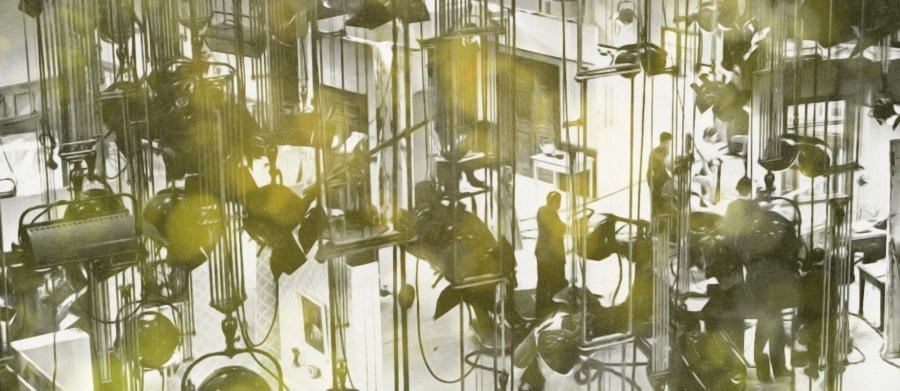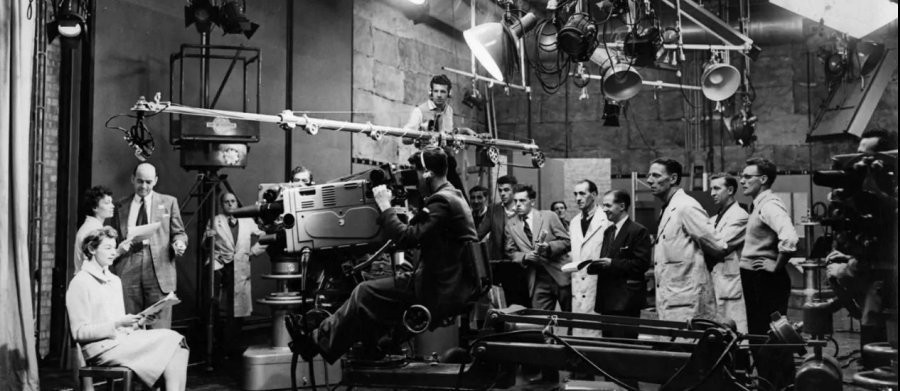
The History of ITV - Part 5
Television Advertising: Ad-Mags aka Shopper's Guides
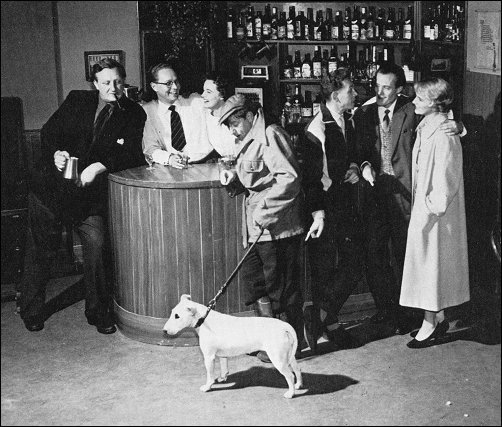
Of all the Ad-Mags there was one show that reigned supreme: 'Jim's In'
One of the controversial talking points of the great television debate of the early 1950s was the subject of 'shopper's guides' and 'advertising documentaries'. Those opposed to commercial television went to great lengths to ensure that a distinction was made between broadcast programmes and advertisements and that the type of US style sponsored TV show should be avoided at all costs. Nevertheless, in spite of the objectors concerns the ITA Act did little to dispel their fears when it stated "there should be no connection between the actual programme and the advertisements, except in shopping guides." Those last two words left the door wide open, and commercial television wasted no time in exploiting it...
These so-called shoppers guides aimed at those either not able to afford or unwilling to pay the price of a regular television advertisement began broadcasting almost as soon as the first commercial television companies began broadcasting. They consisted only of a personable 'presenter' describing a number of products, but as the grew in popularity they were expanded to last around fifteen minutes each and became programmes in their own right. They also became known as 'Ad-Mags.'
In her 1980 publication The Tuppenny Punch and Judy Show - 25 years of TV commercials - Jo Gable writes:
The Ad-Mag was unique to Britain, and there was a kind of backdoor bravado about them in the way every Ad-Mag transmission cheekily bumped up the amount advertising per clock hour. But viewers never complained. They loved the quaint little programmes, which provided the same fascination as flipping through a mail-order catalogue.
The very first Ad-Mag guide to appear was called Elizabeth Goes Shopping and it was hosted by Elizabeth Allan who would visit the more upmarket London stores of the day such as the Oxford Street based Marshall and Snelgrove (who had merged with Debenham's after the First World War but retained their name until the 1970s) and Harrods. Elizabeth Allen was already well known to viewers of the BBC and advertisers were quite keen to have their products demonstrated by familiar and trusted faces and as ITV was the new kid on the block this meant gainful employment for a number of established BBC presenters such as Sylvia Peters, MacDonald Hobley and Katherine (Katie) Boyle. One other Ad-Mag presenter that was to become familiar to ITV viewers (especially children) was Muriel Young.
Light entertainers such as Kenneth Horne, Richard Murdoch and Tommy Trinder were well known and well loved by the British public but where these top headliners could not be afforded, especially regionally, they were replaced by the kindly aunt or uncle type such as Jack Howarth, later to become a familiar face nationally as Jack Walker in Coronation Street.
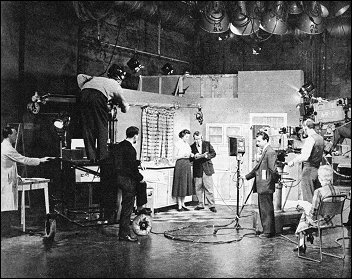
A quite different programme was Margot Lovell's Hello, Come In, which was primarily directed to the housewife and gave household hints of all kinds, both commercial and non-commercial. Margot ended up with a huge post-bag with all sorts of domestic enquiries. Some Ad-Mags were weekly, some fortnightly, some monthly: some were one-offs, for example, the Motor and Radio Shows or the Ideal Home Exhibition.
But of all the Ad-Mags there was one show that reigned supreme. Jim's Inn starred Jimmy and Maggie Hanley as a couple (as indeed they were in real life) who ran a village pub in fictitious Wembleham. Each week customers-played by Roma Cresswell, John Sherlock, Jack Edwardes, Diane Watts, Dennis Bowen, Ken Howard and Victor Platt-would come into the pub and over a pint discuss the price and quality of a variety of domestic products. Each 15-minute episode went out live, once a week, at 10:45pm and the series became almost something of a soap opera. Director Pat Baker claimed that it was the advertising that gave the series a sense of reality: "People do talk, in a village pub, about things like household or gardening gadgets, and how much they paid for them".
By 1957, Jim's Inn became so popular that Hulton's Television Annual quoted Associated Redifussion's claim that it was now showing signs of rivalling the popularity of long-established favourites on BBC, such as The Archer's and Mrs Dale's Diary. Every week the inhabitants of Wembleham were seen going about their business and relaxing in each other's company. 'The fun is fast and furious' it claimed. Jimmy Hanley was very much at home in this programme-he ran a country pub of his own in real life. When required the village could even be expanded to accommodate different products like the case where a river had to be invented in order to attract visitors for fishing-so one episode could be devoted to the angler.
Just how influential the programme was is recounted in Jo Gable's book as she tells of the time an advertiser wanted to publicise a fur coat sale:
'There was to be just fifty coats in the sale, and the presentation problem - how to convey all the information in fifteen seconds - seemed very difficult. The solution was for Roma (who ran the local beauty salon) to throw open the door of the pub while the four male characters gave a low whistle. Maggie then said, "What a lovely coat! Where did you get it?"
"Jones and Higgins of Peckham, they've got a sale on. It was reduced from £70 to £50." Replied Roma within the allotted timespan, to everyone's relief. Next morning the department store was virtually under siege, the queue headed by a North London woman clutching five ten-pound notes.'
The shows went out live for the first few years and often the actors had little time to learn their scripts, and so a huge glass ashtray was put on the bar under which information on more complicated products was placed. Michael Westmore, Joe Garwood and Anstice Shaw were the producers responsible for Associated Redifussion's Ad-Mags. Joe Garwood said it was like producing five first nights a week. Sadly, there are no recordings of Jim's Inn left in the archives, although other 'Ad-Mags' have survived (see bottom of page for an example). Slater's Bazaar starred John Slater, whilst Send for Saunders had as its star playing a concierge in a block of flats.
There were also comedy Ad-Mags at the end of the fifties and in For Pete's Sake husband and wife team Janet Brown and Peter Butterworth presented a twenty-minute programme in which they would parody a well-known film. In one particular scene they did a take on The Count of Monte Cristo. Two bearded prisoners are contemplating their escape when one points out that because of their long beards they would be easily recognised once outside the prison. At this point, the other prisoner produces something he smuggled into the cell - a Telefunken cordless electric razor. The advertisement drew 5,000 replies and the company struggled to keep up with demand.
Bernard Bresslaw, Clive Dunn and Mario Fabrizi appeared in a comedy Ad-Mag for Harrison Gisbson's department store. The day after the show went out the store noticed a sizable increase in business, but when one customer complained to the managing director about a store of Harrison Gibson's high calibre being associated with such low comedy, the Ad-Mags were summarily cancelled. Not everyone took such high moral ground and Ad-Mags continued to be hugely popular attracting the likes of Marks and Spencer who ran fifteen-minute Ad-Mags to promote their goods.
However, the shows soon came in for much criticism in a damning official report. In 1960 the Pilkington Committee was set up to report on British broadcasting and in particular the infant ITV industry, which although only five years old was by far the most popular of the two channels on British television (the BBC's audience share was barely 25%). By 1961 rumours were rife that Sir Harry Pilkington's report (actually drafted by Dr Richard Hoggart) was going to be damning of ITV's programme policy. In fact, no one was prepared for just how far The Pilkington Report went when it was published in June 1962. In his book The Television Barons esteemed television critic Jack Tinker writes:
'The venom of Pilkington's condemnation of ITV's standards and populist policies surprised even the hard-core anti-ITV faction which had held out so volubly in Parliament and elsewhere against the introduction of commercial television in this country.'
'...the puritan brigade rallied the opposition forces once again. They set to charge full tilt in the hope of scattering what was deemed to be the wages of sinful Mammon and a rapid descent into mindless mediocrity.'
'A little cosmetic surgery to the unacceptable face of capitalism'
Of Ad-Mags the report stated that "Ad-Mags blur the distinction between programmes and advertisements. In effect characters known to viewers as friendly personalities because they appear in regular programmes endorse, as though they were disinterested parties, the claims of the advertisers. They give the impression of having, on the most sensible homely grounds, decided to recommend this article rather than that."
The Committee's second complaint was that these programmes were, in fact, sponsored television, and although they were made by the programme companies 'the impression made on the viewers' was one of sponsorship.
Lastly, the Committee felt that Ad-Mags increased the amount of television advertising time by more than was envisaged in the ITA Act. On all these grounds, therefore, the Committee ruled that advertising magazines should be abolished.
Jack Tinker acknowledges that for their part the ITA decided only to apply 'a little cosmetic surgery to the unacceptable face of capitalism,' and although the recommendations had not been made law just yet, eleven out of the fifteen Ad-Mags then being run on ITV were dropped within a few months of the reports publication. Only Rediffusion (which made Jim's Inn as well as several other Ad-Mags) decided to wait until Parliament had ruled. With 70% of its viewing audience in favour of Ad-Mags the company's general manager, Tom Brownrigg, lobbied MP's to reconsider. But by the end of the year the ban was made official.
As Jo Gable points out "In the introduction to the Pilkington Report the Committee made it clear that it was within its power to recommend ITA completely restructure its television service, possibly doing without advertising revenue altogether. A scapegoat was needed, and with the grand sentiment of 'We're only doing it for your own good' that pervades the report from beginning to end, the Ad-Mags were sent into oblivion."
Part 6: A Licence To Print Money? The Pilkington Report and how ITV survived it.
Article
Laurence Marcus October 2005. Reference Sources: TV Mirror magazine (various), The Guiness Book of TV Facts and Feats, The Television Annual (various editions), Girl Television and Film Annual (various editions), ATV Television Show Book (various editions), The Tuppenny Punch and Judy Show by Jo Gable, Yesterday's Britain (a Reader's Digest publication).
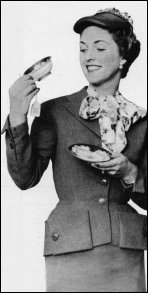
Katie Boyle tests out the latest line in teaware for an early consumer show.
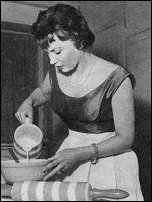
Muriel Young is cooking up something with the help of this nice line in Cornishware.
